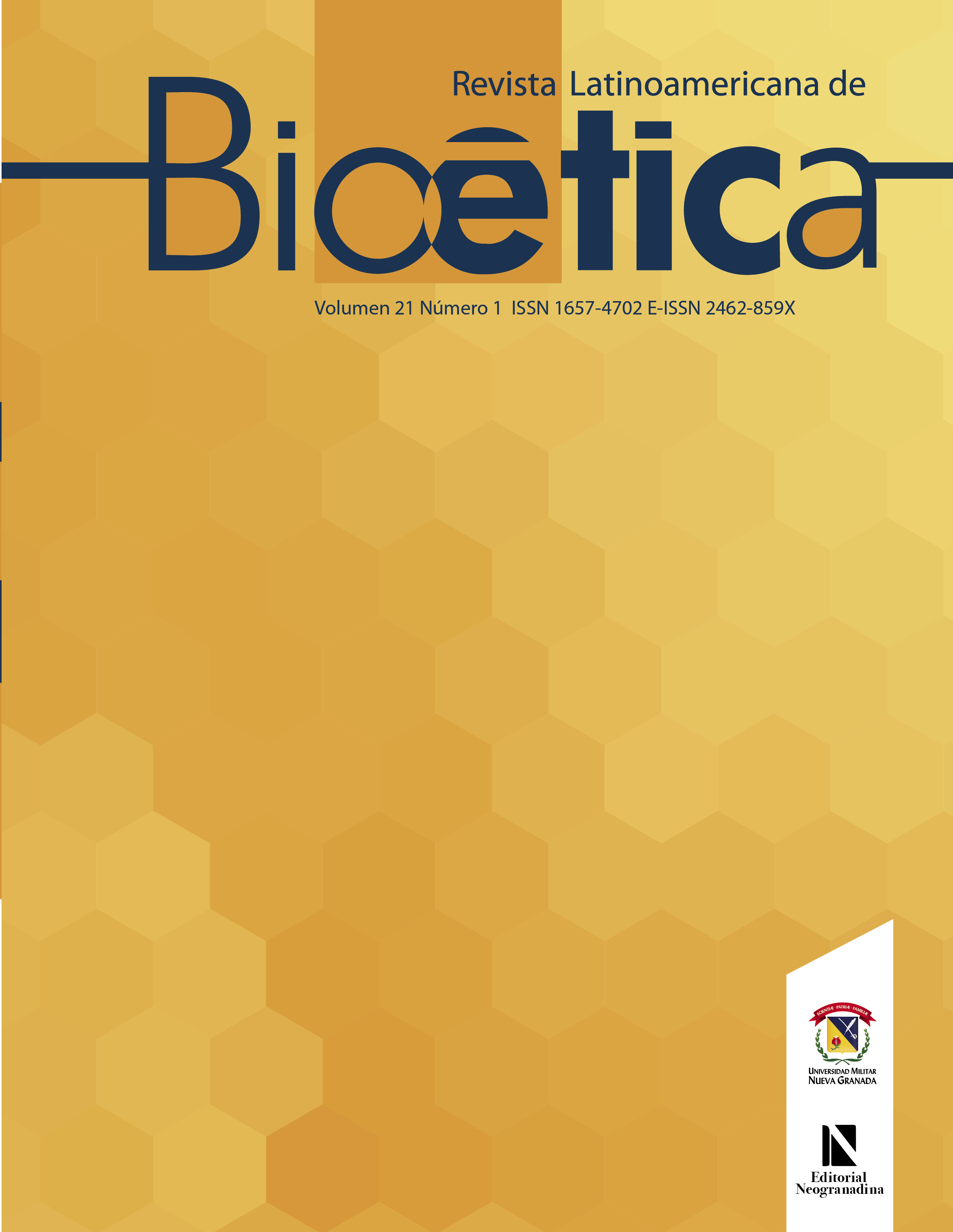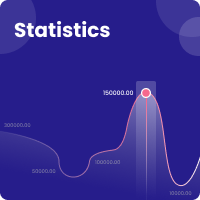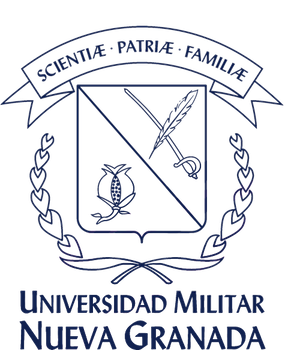Jahi McMath, a New Disorder of Consciousness
Abstract
In this paper, I review the case of Jahi McMath, who was diagnosed with brain death (BD). Nonetheless, ancillary tests performed nine months after the initial brain insult showed conservation of intracranial structures, EEG activity, and autonomic reactivity to the “Mother Talks” stimulus. She was clinically in an unarousable and unresponsive state, without evidence of self-awareness or awareness of the environment. However, the total absence of brainstem reflexes and partial responsiveness rejected the possibility of a coma. Jahi did not have uws because she was not in a wakefulness state and showed partial responsiveness. She could not be classified as a LIS patient either because LIS patients are wakeful and aware, and although quadriplegic, they fully or partially preserve brainstem reflexes, vertical eye movements or blinking, and respire on their own. She was not in an MCS because she did not preserve arousal and preserved awareness only partially. The CRS-R resulted in a very low score, incompatible with MCS patients. mcs patients fully or partially preserve brainstem reflexes and usually breathe on their own. MCS has always been described as a transitional state between a coma and UWS but never reported in a patient with all clinical BD findings. This case does not contradict the concept of BD but brings again the need to use ancillary tests in BD up for discussion. I concluded that Jahi represented a new disorder of consciousness, non-previously described, which I have termed “reponsive unawakefulness syndrome” (RUS).
Downloads
References
Bernat JL, Brust JCM. Strategies to improve uniformity in brain death determination. Neurology. 2019;92:401-402. doi: https://doi.org/10.1212/WNL.0000000000006994
Machado C, Estevez M, DeFina PA, Leisman G. Reader response: An interdisciplinary response to contemporary concerns about brain death determination. Neurology. 2018;91(11):535. doi:
https://doi.org/10.1212/01.wnl.0000544244.66565.8d
Machado C, Perez J, Scherle C, Areu A, Pando A. Brain death diagnosis and apnea test safety. Ann Indian Acad Neurol. 2009;12(3):197-200. doi: https://doi.org/10.4103/0972-2327.56326
Walter U, Brandt SA. Diagnosis of irreversible loss of brain function ("brain death")-what is new?. Nervenarzt. 2019;90:1021-1030. https://doi.org/10.1007/s00115-019-0765-8
Lewis A. Reconciling the Case of Jahi McMath. Neurocrit Care. 2018;29(1):20-22. doi: https://doi.org/10.1007/s12028-018-0561-5
Machado C, Estevez M, DeFina PA, Leisman G. Response to Lewis A: Reconciling the Case of Jahi McMath. Neurocrit Care. 2018;29(3):521-522. doi: https://doi.org/10.1007/s12028-018-0602-0
Shewmon DA. The Case of Jahi McMath: A Neurologist's View. Hastings Cent Rep. 2018;48 Suppl 4:S74-S76. doi: https://doi.org/10.1002/hast.962
Shewmon DA. Truly Reconciling the Case of Jahi McMath. Neurocrit Care. 2018;29(2):165-170. doi: https://doi.org/10.1007/s12028-018-0593-x
Truog RD. Lessons from the Case of Jahi McMath. Hastings Cent Rep. 2018;48 Suppl 4:S70-S73. doi: https://doi.org/10.1002/hast.961
Truog RD. Defining Death-Making Sense of the Case of Jahi McMath. jama 2018;319(18):1859-1860. doi: https://doi.org/10.1001/jama.2018.3441
Lewis A. Response to Machado et al. re: Jahi McMath. Neurocrit Care. 2018;29(3):523-524. doi: https://doi.org/10.1007/s12028-018-0603-z
Lewis A. The Legacy of Jahi McMath. Neurocrit Care. 2018;29(3):519-520. doi: https://doi.org/10.1007/s12028-018-0589-6
Machado CD, Estevez M, Leisman G, Rodriguez R, Presitigiacomo C, Fellus J, et al. A Reason for care in the clinical evaluation of function on the spectrum of consciousness J Funct Neurol Rehabil Ergon. 2017;4:542-556.
Machado C, Estevez M. Reader Response: Practice Current: When do you order ancillary tests to determine brain death? Neurol Clin Pract. 2018;8(5):364. doi: https://doi.org/10.1212/CPJ.0000000000000537
Heran MK, Heran NS, Shemie SD. A review of ancillary tests in evaluating brain death. Can J Neurol Sci. 2008;35:409-419. https://doi.org/10.1017/S0317167100009069
Machado C. Brain Death: A reappraisal. New York: Springer Science+Bussiness Media, LLC; 2007.
Bernat JL. On irreversibility as a prerequisite for brain death determination. Adv Exp Med Biol. 2004;550:161-167. doi: https://doi.org/10.1007/978-0-306-48526-8_14
Ingvar DH. Brain death--total brain infarction. Acta Anaesthesiol Scand Suppl. 1971;45:129-140. doi: https://doi.org/10.1111/j.1399-6576.1971.tb00668.x
Machado C. Are brain death findings reversible? Pediatr Neurol. 2010;42(4):305-306. doi: https://doi.org/10.1016/j.pediatrneurol.2009.11.013
Machado C. Diagnosis of brain death. Neurol Int. 2010;2:e2. https://doi.org/10.4081/ni.2010.e2
Wijdicks EF, Pfeifer EA. Neuropathology of brain death in the modern transplant era. Neurology. 2008;70(15):1234-1237. doi: https://doi.org/10.1212/01.wnl.0000289762.50376.b6
Walker AE, Diamond EL, Moseley J. The neuropathological findings in irreversible coma. A critique of the "respirator." J Neuropathol Exp Neurol. 1975;34(4):295-323. doi: https://doi.org/10.1097/00005072-197507000-00001
Shewmon AD. The brain and somatic integration: insights into the standard biological rationale for equating "brain death" with death. J Med Philos. 2001;26(5):457-478. doi: https://doi.org/10.1076/jmep.26.5.457.3000
Shewmon DA, Holmes GL, Byrne PA. Consciousness in congenitally decorticate children: developmental vegetative state as self-fulfilling prophecy. Dev Med Child Neurol. 1999;41(6):364-374. doi: https://doi.org/10.1017/S0012162299000821
Shewmon DA. Spinal shock and brain death': somatic pathophysiological equivalence and implications for the integrative-unity rationale. Spinal Cord. 1999;37(5):313-324. doi: https://doi.org/10.1038/sj.sc.3100836
Repertinger S, Fitzgibbons WP, Omojola MF, Brumback RA. Long survival following bacterial meningitis-associated brain destruction. J Child Neurol. 2006;21(7):591-595. doi: https://doi.org/10.1177/08830738060210070401
Machado C. Reader response: Variability in reported physician practices for brain death determination. Neurology. 2020;94(2):97. doi: https://doi.org/10.1212/WNL.0000000000008790
Greer DM, Wang HH, Robinson JD, Varelas PN, Henderson GV, Wijdicks EF. Variability of Brain Death Policies in the United States. jama Neurol. 2016;73(2):213-218. doi: https://doi.org/10.1001/jamaneurol.2015.3943
Wijdicks EF. Determining brain death in adults. Neurology. 1995;45:1003-1011. https://doi.org/10.1212/WNL.45.5.1003
Wijdicks EF, Varelas PN, Gronseth GS, Greer DM. Evidence-based guideline update: determining brain death in adults: report of the Quality Standards Subcommittee of the American Academy of Neurology. Neurology. 2010;74(23):1911-1918. doi: https://doi.org/10.1212/WNL.0b013e3181e242a8
Machado C. Death as a biological notion. J Crit Care. 2014;29(6):1119-1120. doi: https://doi.org/10.1016/j.jcrc.2014.07.029
Bernat JL. The biophilosophical basis of whole-brain death. Soc Philos Policy 2002;19(2):324-342. doi: https://doi.org/10.1017/S0265052502192132
Machado C. Death on neurological grounds. J Neurosurg Sci. 1994;38:209-222.
Bernat JL. The whole-brain concept of death remains optimum public policy. J Law Med Ethics. 2006;34(1):35-43, 33. doi: https://doi.org/10.1111/j.1748-720X.2006.00006.x
Determination of death (Uniform Determination of Death Act of 1981); natural death (Natural Death Act of 1981). LEXIS District of Columbia. YOU NEED SEPARATE REFERENCES FOR EACH ACT. CHANGE IN THE TEXT ACCORDINGLY.
Pallis C. ABC of brain stem death. The arguments about the eeg. Br Med J (Clin Res Ed). 1983;286(6361):284-287. doi: https://doi.org/10.1136/bmj.286.6361.284
Wijdicks EF. Determining Brain Death. Continuum (Minneap Minn). 2015;21:1411-1424. doi: https://doi.org/10.1212/01.CON.0000475535.64449.37
Machado C, Estevez M, Rodriguez R, Pérez-Nellar J, Gutiérrez J, Carballo M, et al. A Cuban perspective on management of persistent vegetative state. medicc Rev. 2012;14(1):44-48. doi: https://doi.org/10.37757/MR2012V14.N1.3
Varelas PN, Brady P, Rehman M, Afshinnik A, Mehta C, Abdelhak T, et al. Primary Posterior Fossa Lesions and Preserved Supratentorial Cerebral Blood Flow: Implications for Brain Death Determination. Neurocrit Care. 2017;27(3):407-414. doi: https://doi.org/10.1007/s12028-017-0442-3
Varelas PN. Brainstem or entire brain-based declaration of death: is there a difference? Pract Neurol. 2016;16(2):85-86. doi: https://doi.org/10.1136/practneurol-2015-001348
Ferbert A, Buchner H, Ringelstein EB, Hacke W. Isolated brain-stem death. Case report with demonstration of preserved visual evoked potentials (veps). Electroencephalogr Clin Neurophysiol. 1986;65(2):157-160. doi: https://doi.org/10.1016/0168-5597(86)90049-3
Machado C. Further thoughts about the "transatlantic divide" in brain death determination. Anaethesia. 2019;74. Available from: http://www.respond2articles.com/ANA/forums/thread/2778.asp.
Grigg MM, Kelly MA, Celesia GG, Ghobrial MW, Ross ER. Electroencephalographic activity after brain death. Arch Neurol. 1987;44(9):948-954. doi: https://doi.org/10.1001/archneur.1987.00520210048018
Wijdicks EF. The transatlantic divide over brain death determination and the debate. Brain. 2012;135(4):1321-1331. doi: https://doi.org/10.1093/brain/awr282
Walter U, Fernandez-Torre JL, Kirschstein T, Laureys S. When is "brainstem death" brain death? The case for ancillary testing in primary infratentorial brain lesion. Clin Neurophysiol. 2018;129(11):2451-2465. doi: https://doi.org/10.1016/j.clinph.2018.08.009
Di Perri C, Thibaut A, Heine L, Soddu A, Demertzi A, Laureys S. Measuring consciousness in coma and related states. World J Radiol. 2014;6(8):589-597. doi: https://doi.org/10.4329/wjr.v6.i8.589
Laureys S, Schiff ND. Coma and consciousness: paradigms (re)framed by neuroimaging. Neuroimage. 2012;61(2):478-491. doi: https://doi.org/10.1016/j.neuroimage.2011.12.041
Porges SW. The polyvagal perspective. Biol Psychol. 2007;74(2):116-143. doi: https://doi.org/10.1016/j.biopsycho.2006.06.009
Machado C, Estevez M, Perez-Nellar J, Schiavi A. Residual vasomotor activity assessed by heart rate variability in a brain-dead case. bmj Case Rep. 2015;2015:10.1136/bcr-2014-205677. doi: https://doi.org/10.1136/bcr-2014-205677
Machado C, Korein J, Aubert E, Bosch J, Alvarez MA, Rodríguez R, et al. Recognizing a mother's voice in the persistent vegetative state. Clin eeg Neurosci. 2007;38(3):124-126. doi: https://doi.org/10.1177/155005940703800306
Estevez-Baez M, Machado C, Garcia-Sanchez B, Rodríguez V, Alvarez-Santana R, Leisman G, et al. Autonomic impairment of patients in coma with different Glasgow coma score assessed with heart rate variability. Brain Inj. 2019;33(4):496-516. doi: https://doi.org/10.1080/02699052.2018.1553312
Baillard C, Vivien B, Mansier P, Mangin L, Jasson S, Riou B, et al. Brain death assessment using instant spectral analysis of heart rate variability. Crit Care Med. 2002;30(2):306-310. doi: https://doi.org/10.1097/00003246-200202000-00007
Machado-Ferrer Y, Estevez M, Machado C, Hernández-Cruz A, Carrick FR, Leisman G, et al. Heart rate variability for assessing comatose patients with different Glasgow Coma Scale scores. Clin Neurophysiol. 2013;124(3):589-597. doi: https://doi.org/10.1016/j.clinph.2012.09.008
Machado C, Estevez M, Perez-Nellar J, Gutiérrez J, Rodríguez R, Carballo M, et al. Autonomic, eeg, and behavioral arousal signs in a pvs case after Zolpidem intake. Can J Neurol Sci. 2011;38(2):341-344. doi:
https://doi.org/10.1017/S0317167100011562
Machado C, Estevez M, Rodriguez R, Perez-Nellar J, Chichilla M, DeFina P, et al. Zolpidem arousing effect in persistent vegetative state patients: autonomic, eeg and behavioral assessment. Curr Pharm Des. 2014;20:4185-4202. doi: https://doi.org/10.2174/13816128113196660646
Di HB, Yu SM, Weng XC, Laureys S, Yu D, Li JQ, et al. Cerebral response to patient's own name in the vegetative and minimally conscious states. Neurology. 2007;68(12):895-899. doi: https://doi.org/10.1212/01.wnl.0000258544.79024.d0
Machado C, Kerein J, Ferrer Y, Portela L, de la CGM, Manero JM. The concept of brain death did not evolve to benefit organ transplants. J Med Ethics. 2007;33(4):197-200. doi: https://doi.org/10.1136/jme.2006.016931
Demertzi A, Tagliazucchi E, Dehaene S, Deco G, Barttfeld P, Raimondo F, et al. Human consciousness is supported by dynamic complex patterns of brain signal coordination. Sci Adv. 2019;5(2):eaat7603. doi: https://doi.org/10.1126/sciadv.aat7603
Di Perri C, Bahri MA, Amico E, Thibaut A, Heine L, Antonopoulos G, et al. Neural correlates of consciousness in patients who have emerged from a minimally conscious state: a cross-sectional multimodal imaging study. Lancet Neurol. 2016;15(8):830-842. doi: https://doi.org/10.1016/S1474-4422(16)00111-3
Wijdicks EFM. The Ascending Reticular Activating System. Neurocrit Care. 2019;31:419-422. https://doi.org/10.1007/s12028-019-00687-7
Machado C, Estevez M, Redriguez R, Perez-Nellar J, Silva S, Loubinoux I, et al. Wakefulness and loss of awareness: brain and brainstem interaction in the vegetative state. Neurology. 2010;75(8):751-752. doi: https://doi.org/10.1212/WNL.0b013e3181ec67bb
Machado C, Rodriguez R, Carballo M, Korein J, Sanchez-Catasus C, Pérez J, et al. Brain anatomy, cerebral blood flow, and connectivity in the transition from pvs to mcs. Rev Neurosci. 2009;20:177-180. doi: https://doi.org/10.1515/REVNEURO.2009.20.3-4.177
Pallis C. Brainstem death: the evolution of a concept. Semin Thorac Cardiovasc Surg. 1990;2:135-152.
Chang C, Leopold DA, Scholvinck ML, Mandelkow H, Picchioni D, Liu X, et al. Tracking brain arousal fluctuations with fmri. Proc Natl Acad Sci. 2016;113(16):4518-4523. doi: https://doi.org/10.1073/pnas.1520613113
Scammell TE, Estabrooke IV, McCarthy MT, Chemelli RM, Yanagisawa M, Miller MS, et al. Hypothalamic arousal regions are activated during modafinil-induced wakefulness. J Neurosci. 2000;20:8620-8628. doi: https://doi.org/10.1523/JNEUROSCI.20-22-08620.2000
Ogilvie RD. The process of falling asleep. Sleep Med Rev. 2001;5(3):247-270. doi: https://doi.org/10.1053/smrv.2001.0145
Ashwal S, Cranford R. Medical aspects of the persistent vegetative state--a correction. The Multi-Society Task Force on pvs. N Engl J Med. 1995;333(2):130. doi: https://doi.org/10.1056/NEJM199507133330216
The permanent vegetative state. Review by a working group convened by the Royal College of Physicians and endorsed by the Conference of Medical Royal Colleges and their faculties of the United Kingdom. J R Coll Physicians Lond. 1996;30:119-121.
Parvizi J, Damasio AR. Neuroanatomical correlates of brainstem coma. Brain. 2003;126(7):1524-1536. doi: https://doi.org/10.1093/brain/awg166
Laureys S, Celesia GG, Cohadon F, Lavrijsen J, León-Carrión, J, Sannita WG, et al. Unresponsive wakefulness syndrome: a new name for the vegetative state or apallic syndrome. bmc Med. 2010;8(1):68. doi: https://doi.org/10.1186/1741-7015-8-68
Laureys S, Giacino JT, Schiff ND, Schabus M, Owen AM. How should functional imaging of patients with disorders of consciousness contribute to their clinical rehabilitation needs? Curr Opin Neurol. 2006;19(6):520-527. doi: https://doi.org/10.1097/WCO.0b013e3280106ba9
Laureys S, Pellas F, Van Eeckhout P, Ghorbel S, Schnakers C, Perrin F, et al. The locked-in syndrome: what is it like to be conscious but paralyzed and voiceless? Prog Brain Res. 2005;150:495-511. doi: https://doi.org/10.1016/S0079-6123(05)50034-7
Laureys S. The neural correlate of (un)awareness: lessons from the vegetative state. Trends Cogn Sci. 2005;9:556-559. doi: https://doi.org/10.1016/j.tics.2005.10.010
Wijdicks EFM. Predicting the outcome of a comatose patient at the bedside. Pract Neurol. 2019. doi: https://doi.org/10.1136/practneurol-2019-002359
Laureys S, Bodart O, Gosseries O. The Glasgow Coma Scale: time for critical reappraisal? Lancet Neurol. 2014;13(8):755-757. doi: https://doi.org/10.1016/S1474-4422(14)70152-8
Jennett B, Plum F. Persistent vegetative state after brain damage. A syndrome in search of a name. Lancet. 1972;4(1):734-737. doi: https://doi.org/10.1016/S0020-1383(72)80031-7
Machado C, Estevez M, Carrick FR, Rodríguez R, Pérez-Nellar J, Chinchilla M, et al. Vegetative state is a pejorative term. NeuroRehabilitation. 2012;31(4):345-347. doi: https://doi.org/10.3233/NRE-2012-00802
Machado C. Reader response: Disruption of the ascending arousal network in acute traumatic disorders of consciousness. Neurology. 2020;95(5):233-234. doi: https://doi.org/10.1212/WNL.0000000000010097
Giacino J, Fins JJ, Machado A, Schiff ND. Central thalamic deep brain stimulation to promote recovery from chronic posttraumatic minimally conscious state: challenges and opportunities. Neuromodulation. 2012;15(4):339-349. doi: https://doi.org/10.1111/j.1525-1403.2012.00458.x
Ueyama T, Shirataki K, Tamaki N. Traumatic basilar artery dissection presenting with "locked-in" syndrome: report of a case. No Shinkei Geka. 1996;24:1035-1039.
Wijdicks EF, Scott JP. Outcome in patients with acute basilar artery occlusion requiring mechanical ventilation. Stroke. 1996;27(8):1301-1303. doi: https://doi.org/10.1161/01.STR.27.8.1301
Wijdicks EF. The clinical determination of brain death: rational and reliable. Semin Neurol. 2015;35(2):103-104. doi: https://doi.org/10.1055/s-0035-1547531
Giacino JT, Ashwal S, Childs N, et al. The minimally conscious state: definition and diagnostic criteria. Neurology. 2002;58(3):349-353. doi: https://doi.org/10.1212/WNL.58.3.506
Seel RT, Sherer M, Whytee J, Katz DI, Giacino JT, Rosenbaum AM, et al. Assessment scales for disorders of consciousness: evidence-based recommendations for clinical practice and research. Arch Phys Med Rehabil. 2010;91(12):1795-1813. doi: https://doi.org/10.1016/j.apmr.2010.07.218
Laureys S, Boly M, Maquet P. Tracking the recovery of consciousness from coma. J Clin Invest. 2006;116(7):1823-1825. doi: https://doi.org/10.1172/JCI29172
Cruse D, Thibaut A, Demertzi A, Nantes JC, Bruno MA, Gosseries O, et al. Correction to: Actigraphy assessments of circadian sleep-wake cycles in the Vegetative and Minimally Conscious States. bmc Med. 2018;16(1):134. doi: https://doi.org/10.1186/s12916-018-1139-y
Wielek T, Lechinger J, Wislowska M, Blume C, Ott P, Wegenkittl S, et al. Sleep in patients with disorders of consciousness characterized by means of machine learning. PLoS One. 2018;13(1):e0190458. doi: https://doi.org/10.1371/journal.pone.0190458
Machado C. The minimally conscious state: definition and diagnostic criteria. Neurology. 2002;59:1473-1474. https://doi.org/10.1212/WNL.59.9.1473
Wannez S, Gosseries O, Azzolini D, Martial C, Cassol H, Aubinet C, et al. Prevalence of coma-recovery scale-revised signs of consciousness in patients in minimally conscious state. Neuropsychol Rehabil. 2018;28(8):1350-1359. doi: https://doi.org/10.1080/09602011.2017.1310656
Giacino JT, Kalmar K, Whyte J. The jfk Coma Recovery Scale-Revised: measurement characteristics and diagnostic utility. Arch Phys Med Rehabil. 2004;85:2020-2029. https://doi.org/10.1016/j.apmr.2004.02.033
Naccache L. Minimally conscious state or cortically mediated state? Brain. 2018;141(4):949-960. doi: https://doi.org/10.1093/brain/awx324
Fischer DB, Boes AD, Demertzi A, Evrard HC, Laureys S, Edlow BL, et al. A human brain network derived from coma-causing brainstem lesions. Neurology. 2016;87(23):2427-2434. doi: https://doi.org/10.1212/WNL.0000000000003404
Snider SB, Bodien YG, Bianciardi M, Brown EN, Wu O, Edlow BL. Disruption of the ascending arousal network in acute traumatic disorders of consciousness. Neurology. 2019;93(13):e1281-e1287. doi: https://doi.org/10.1212/WNL.0000000000008163
Demertzi A, Van Ombergen A, Tomilovskaya E, Jeurissen B, Pechenkova E, Di Perri C, et al. Cortical reorganization in an astronaut's brain after long-duration spaceflight. Brain Struct Funct. 2016;221(5):2873-2876. doi: https://doi.org/10.1007/s00429-015-1054-3
Bremer F. Cerveau "isolé" et pbysiologie du sommeil. CR Soc Biol (Paris). 1935;118:1235-1241.
Lindsley DB, Bowden JW, Magoun HW. Effect upon the eeg of acute injury to the brain stem activating system. Electroencephalogr Clin Neurophysiol. 1949;1(1-4):475-486. doi: https://doi.org/10.1016/0013-4694(49)90221-7
Gottesmann C. The neurophysiology of sleep and waking: intracerebral connections, functioning and ascending influences of the medulla oblongata. Prog Neurobiol. 1999;59(1):1-54. doi: https://doi.org/10.1016/S0301-0082(98)00094-X
Lewis A, Adams N, Chopra A, Kirschen MP. Use of Ancillary Tests When Determining Brain Death in Pediatric Patients in the United States. J Child Neurol. 2017;32(12):975-980. doi: https://doi.org/10.1177/0883073817724697












